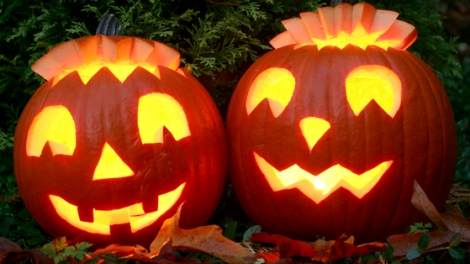Although Halloween is traditionally seen as a no-holds-barred, candy collecting event that comes once a year, it actually has a backstory. And like all backstories (at least the interesting ones) it has some pretty wacky stuff in its past.
It starts off with the ancient, pre-Celtic tradition of Samhain, celebrated on the night of October 31st. As one of those dead-return-to-the-living-world celebrations, people would gather to light bonfires, offer sacrifices, and pay respects to the deceased. Sometime during that period, a form of trick-or-treating arose, called ‘guising’, where people dressed as ghosts, demons, and other unsavory spirits, performing for food and drink.
All Souls’ Day came about when Christianity started to seep into traditionally Celtic lands, blending and merging with older customs. The day was changed to November 2nd by the church, a way of both acknowledging and abolishing the ancient pagan traditions. The only difference would be the practice of ‘souling’, where poor people would visit wealthier houses and receive pastries called soul cakes, and praying for the souls of the homeowners’ dead relatives in payment.
The foiling of the infamous Gunpowder Plot in 1605 created another tradition for the early November collection of events. Guy Fawkes Day, November 5th, had children running around the streets of England, asking for ‘a penny for the Guy’; roughly equivalent to the candy-collecting we do today.
Finally, the custom of trick-or-treating made its way to the US, in approximately the mid-19th century, when the influx of new immigrants popularized the Old World traditions of souling and guising. Unfortunately, matters quickly got out of hand, with pranks becoming a favored tradition. The Great Depression worsened the matter, with vandalism and violence becoming the norm for Halloween mischief. There are many theories on how the trick-or-treating custom came about, but the trend was nevertheless stopped with the onset of World War II, when sugar rationing made the distribution of candy quite ridiculous. However, with the postwar baby boom, trick-or-treating quickly established itself as the standard for all Halloween practices in America’s cities (and newly built suburbs). Without the sugar rationing, candy companies started directing advertisements specifically at the trend, and Halloween became the money-sucking, costumed, fun-filled holiday it is now.
Besides that obligatory history lesson, Halloween has so much more that one could discuss at length. But even with all of the ideal debate-worthy topics it could bring out–sexy costumes, DIY ideas, best type of candy, etc.–the main goal of Halloween should be to gather as much candy while staying safe. But as long as one keeps in mind basic safety tips (travel in groups, don’t eat suspicious candy), one should be able to have a fantastic time running around in various costumes.
Good luck, have fun, and be safe!


